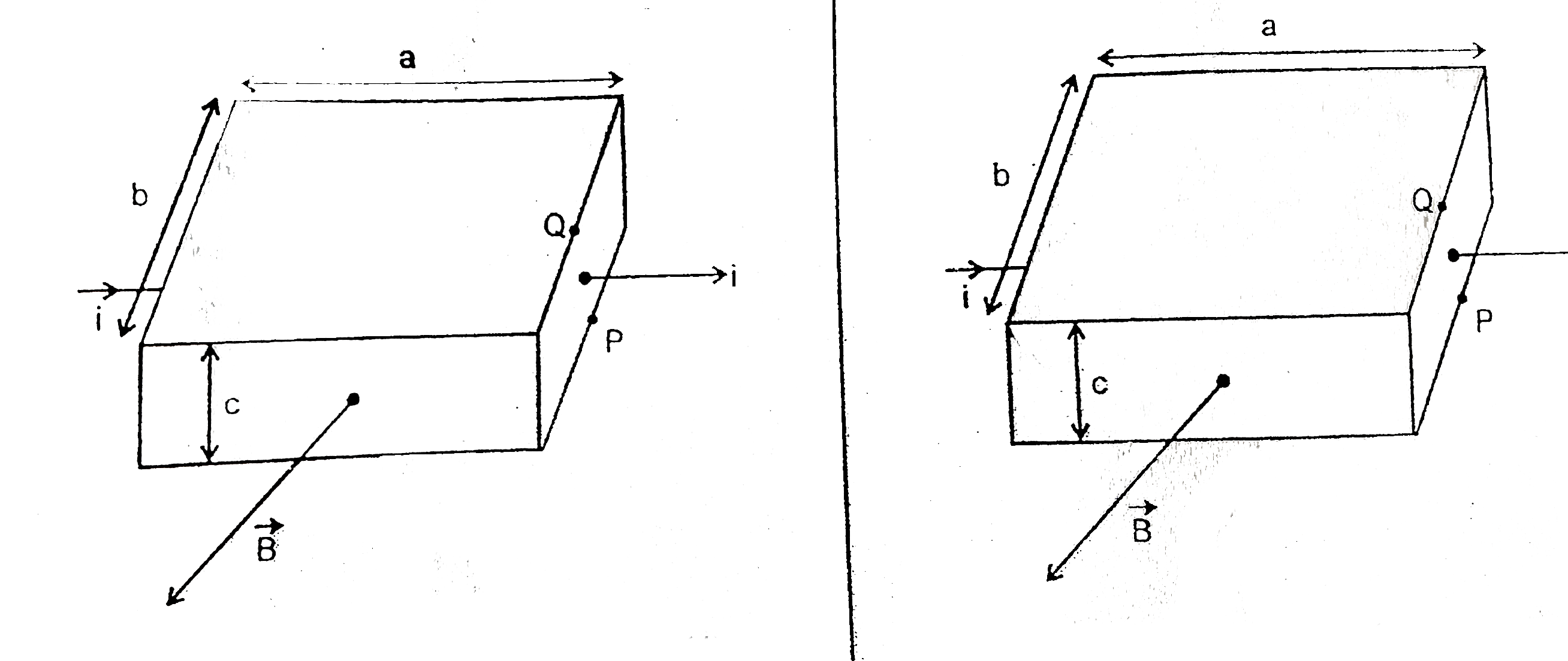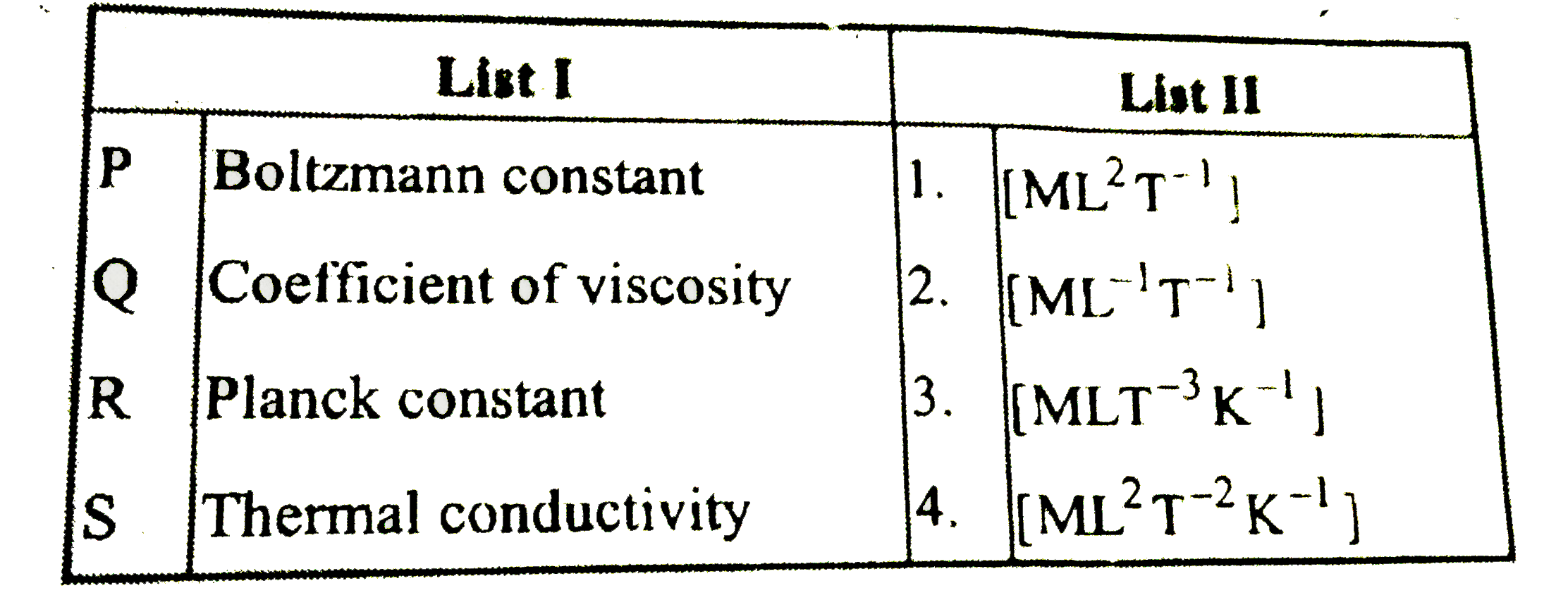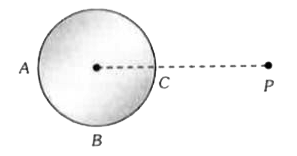A current flows through a rectangular conductor in the presence of uniform magnetic field B pointing out of the page as shown. Then the potential difference VP−VQ is equal to (assume charge carriers in the conductor to be positively charged moving with a drift velocity of v )
 Solution in Gujrati
Solution in Gujrati
Bvb
−Bvb
Bvc
−Bvc
The correct Answer is:C
|ε|=Blv where l is the edge perpendicular to both B and →v i.e.c.
∴|ε|=Bvc.
Now by right hand thumb rule magnetic force an a positive charge moving towards right is in down wrd direction Hence end P will be positive.
∴VP−V! is positive
⇒ε=+Bvl.
Topper's Solved these Questions
- TEST PAPERSBOOK - ALLEN CHAPTER - TEST PAPERSEXERCISE - PAPER 3
92 Videos
- TEST PAPERSBOOK - ALLEN CHAPTER - TEST PAPERSEXERCISE - Part-1 Physics
15 Videos
- TEST PAPERSBOOK - ALLEN CHAPTER - TEST PAPERSEXERCISE - MATHS
1 Videos
- TEST PAPER 4BOOK - ALLEN CHAPTER - TEST PAPER 4EXERCISE - PHYSICS
45 Videos
- UNIT & DIMENSIONS, BASIC MATHS AND VECTOR BOOK - ALLEN CHAPTER - UNIT & DIMENSIONS, BASIC MATHS AND VECTOR EXERCISE - Exercise (J-A)
7 Videos
Similar Questions
A satellite S is moving in an elliptical orbit around the earth. The mass of the satellite is very small compared to the mass of the earth.
View SolutionA quantity of 2 mole of helium gas undergoes a thermodynamic process, in which molar specific heat capacity of the gas depends on absolute temperatureT , according to relation:
C=3RT4T0
where T0 is initial temperature of gas. It is observed that when temperature is increased. volume of gas first decrease then increase. The total work done on the gas until it reaches minimum volume is :-
View SolutionIf complex number z(z≠2) satisfies the equation z2=4z+|z|2+16|z|3, then what is the value of |z|4 ?
View SolutionTwo forces, each of magnitude F have a resultant of the same magnitude F. The angle between the two forces is
View SolutionMatch List I with List II and select the correct answer using the codes given below the lists :

View SolutionAsseration: A point charge q is placed at centre of spherical cavity inside a spherical conductor as shown. Another point charge Q is placed outside the conductor as shown. Now as the point charge Q is pushed away from conductor, the potential difference (V_(A) - V_(B)) between two points A and B within the cavity of sphere remains constant. Reason: The electric field due to charges on outer surface of conductor and outside the conductor is zero at all points inside teh conductor.
View SolutionA current of 2A flows in a system of conductor as shown. The potential difference (VA−VB)

View SolutionDefine the term 'drift velocity' of charge carriers in a conductor and wire its relationship with the current flowing through it.
View SolutionA long straight conductor carries current I. Assume that every charge carrier in it moves with the same drift velocity v. An observer moves parllel to the conductor, in the direction of the current, with a constant velocity v/2. He will observe that the current flowing in the conductor is
View SolutionIf n,e,A and v_(d) are free electron density inside conductor , charge of electron , area of cross-section of conductor and drift velocity of free electrons inside conductor, then current l through the conductor is
View SolutionDefine the term 'drift velocity' of charge carriers in a conductor and wire its relationship with the current flowing through it.
View SolutionDefine the term 'drift velocity' of charge carriers in a conductor and write its relationship with the current flowing through it.
View SolutionWrite the expression for the drift velocity of charge carriers in a conductor of length 'l' across which a potential difference 'V' is applied.
View SolutionWrite the expression for the drift velocity of charge carriers in a conductor of length l across which a potential difference V is applied.
View Solutionबिन्दु P पर रखे बिन्दु आवेश के कारण उत्पन्न विद्युत क्षेत्र में एक खोखला गोलीय चालक चित्रानुसार रखा गया है | यदि VA,VB तथा VC क्रमशः बिन्दुओं A , B व C पर विभव हो तो

View SolutionDefine drift velocity of charge carriers in a conductor. Mention the units of drift velocity.
View Solution
